Here's what I think FLS is trying to say.
Lift VectorAll planes create lift, that's how they're able to fly. The engine provides thrust (or forward momentum if you like). The forward momentum creates airflow over the wings. The wings are designed to provided lift and when you get enough airflow over the wings you fly! Lift vector is just a fancy way of describing this. Your plane raises up into the air, so your Lift Vector is pointed straight up above you (tilt your head back and looks straight up. That's the direction of your Lift vector.)
(Note: The other two forces at work here are Gravity and Drag, but we're explaining Lift vectors so I left them out.)
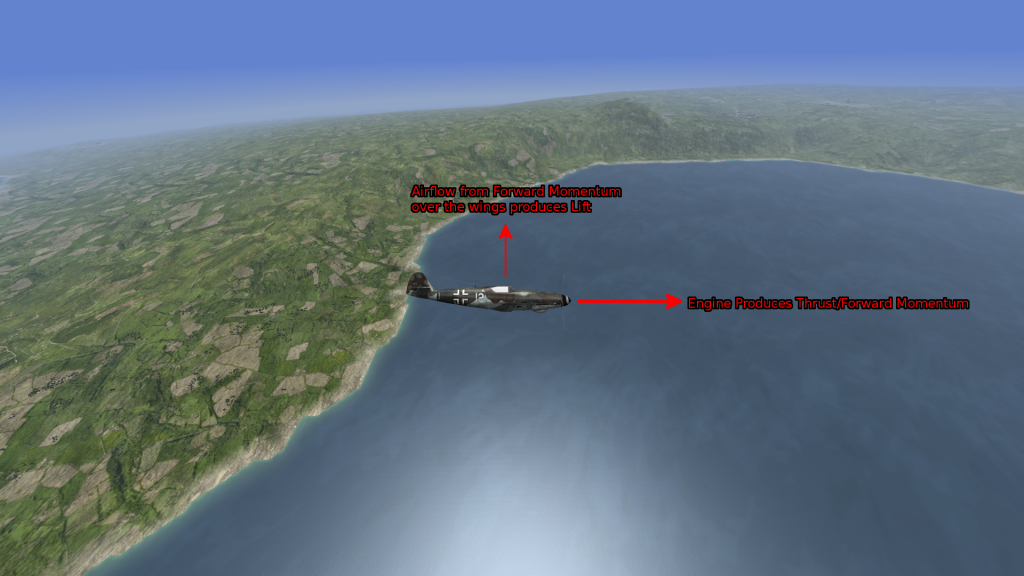
In this rolling scissors fight I am positioning my lift vector behind LtCondor's plane. I'm doing this because I want to get onto his 6 before I start lining up my shot.
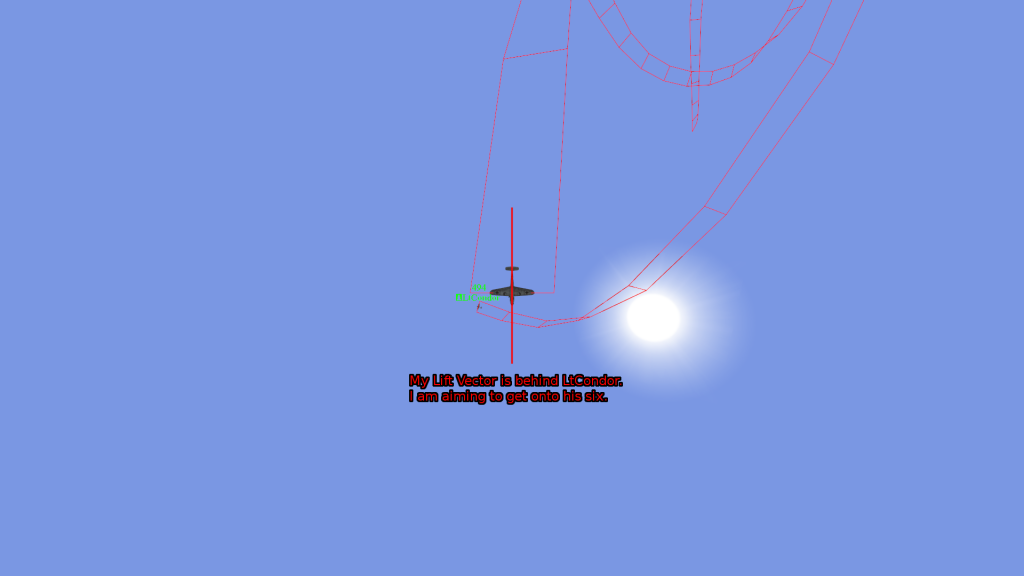
From LtCondor's perspective we can see his lift vector is positioned in front of my plane. He's maneuvering his plane to try and get a shot on me. He won't get that shot though because I've positioned my lift vector behind him to try and get on his 6. This also puts my plane inside his turn circle. (Turn circles will be explained very soon!

)
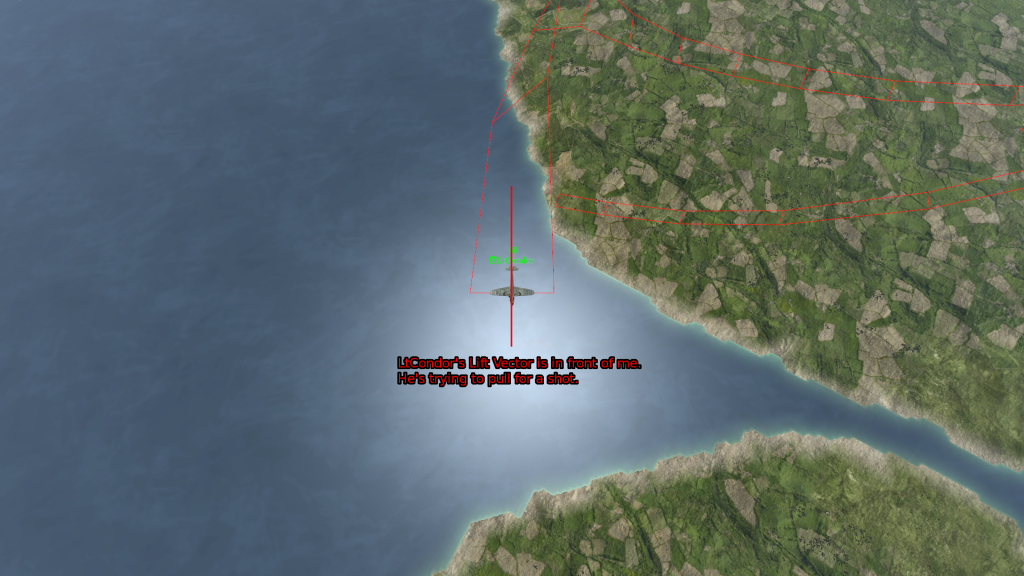
A few seconds later I win the rolling scissors and get behind LtCondor's 3-9 line and am ready to start lining up my shot. (3-9 line: Draw a line right across their plane from wingtip to wingtip, also called the 9 o'clock and 3 o'clock positions hence the name 3-9 line. Everything behind that line is on their 6 or behind them. Everything in front of that line is on their 12 or in front of them.)
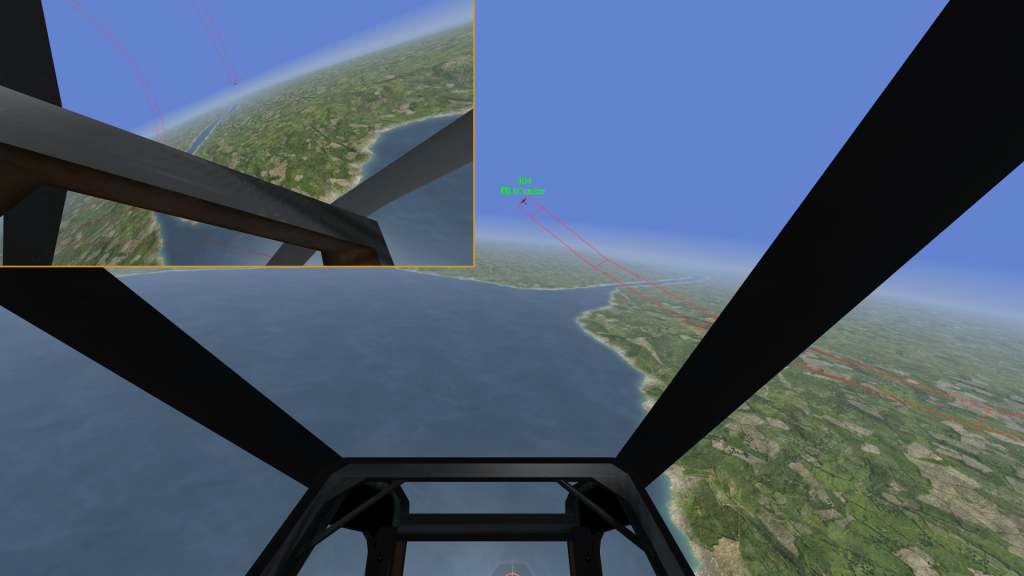 Turning Circles
Turning CirclesTurning circles are quite literally the circle you make when you turn your plane. In this first image I am turning into LtCondor at maximum G's. LtCondor is inside my turn circle so if he were to hover right there like a helicopter then I would be physically incapable of ever shooting him because I simply can not get my guns on him. I'm already pulling maximum G's in my turn. The orange circle shows how tight I can get my turn and at no point would I be able to pull lead on LtCondor and get a shot.
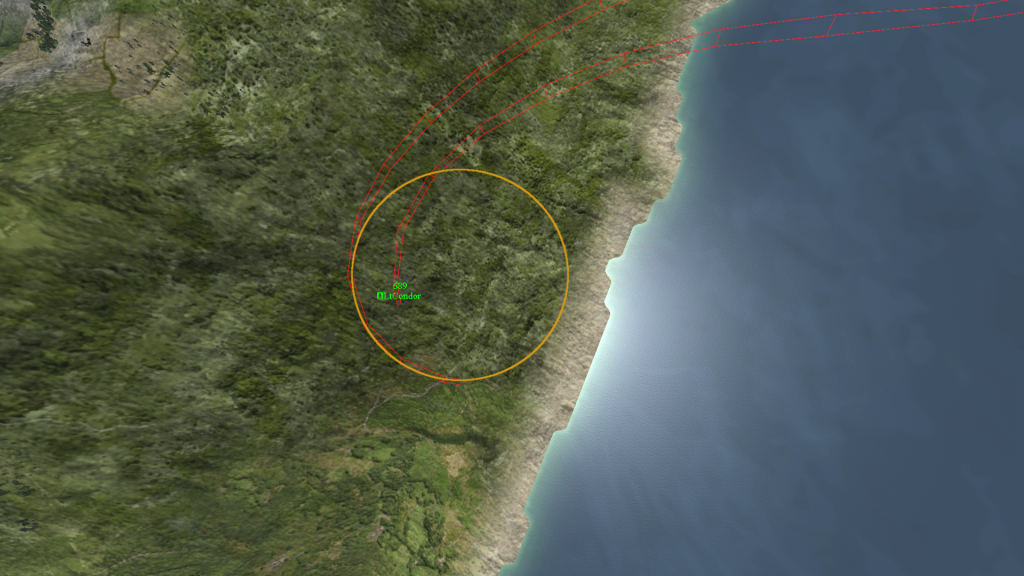
However, that is just one nano-second of a moment in the fight. There are tons of other variables are work here. LtCondor was faster than me and pulling a lead turn the whole way through my turn. He is going too fast to keep inside my turn and starts to drift outside of my turn circle. In this next image we see that he has started to cross from inside my turn circle to outside my turn circle (the orange circle). At the same time we see that I have moved from outside his turn circle to inside his turn circle (the white circle). This is also called a flight path overshoot and is the first step to forcing a 3-9 line overshoot (where he literally flies out in front of you).
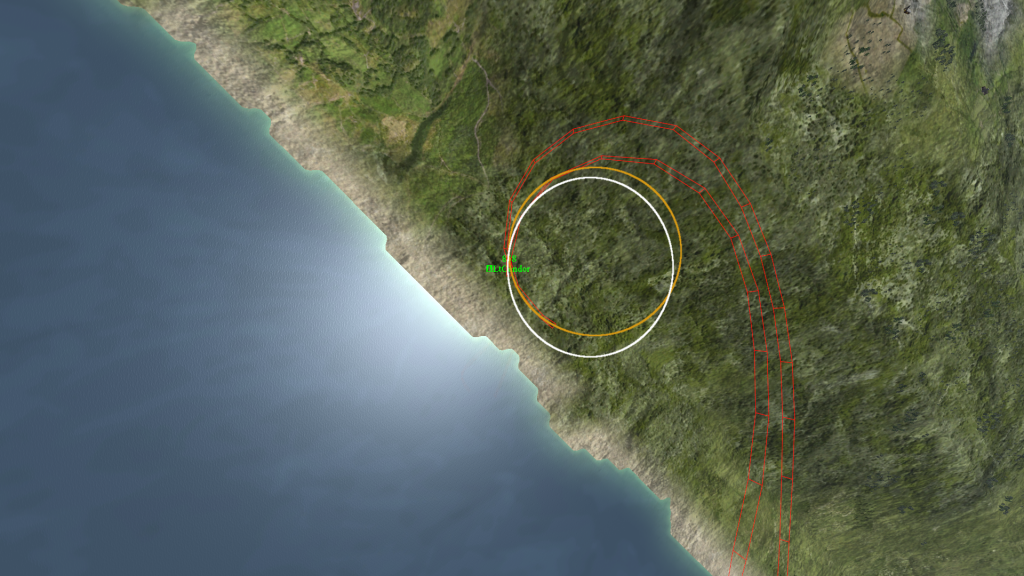
These circles are constantly changing at all times during a fight. Loosening or tightening a turn will create larger or smaller turn circles. The direction of your turn will obviously decide in which way your turn circle is. Most bizarre of all is these turn circles are not actually circles. They're spheres. Planes can also climb and dive as well as turn left and right. Turn circles are created whether your perform a flat turn, and immelman, or a split-s. You can combine horizontal and vertical flight to turn in any direction you want in the sphere.
To show just how drastic and sudden turn circles can change, here's an image of that same fight just 1 second later. I reverse my turn back into LtCondor. This reverses the direction of my turn circle as well. Now instead of my turn circle being back towards our previous flight paths, it is heading the other way away from our previous flight paths. Into our flight paths one second, away from them the next.

For anyone thinking "Well now he's back inside your turn circle and he's going to shoot you!" Remember, turn CIRCLES are SPHERES. In this case I also went into a climb over the top of LtCondor and he misses the shot and overshoots.
